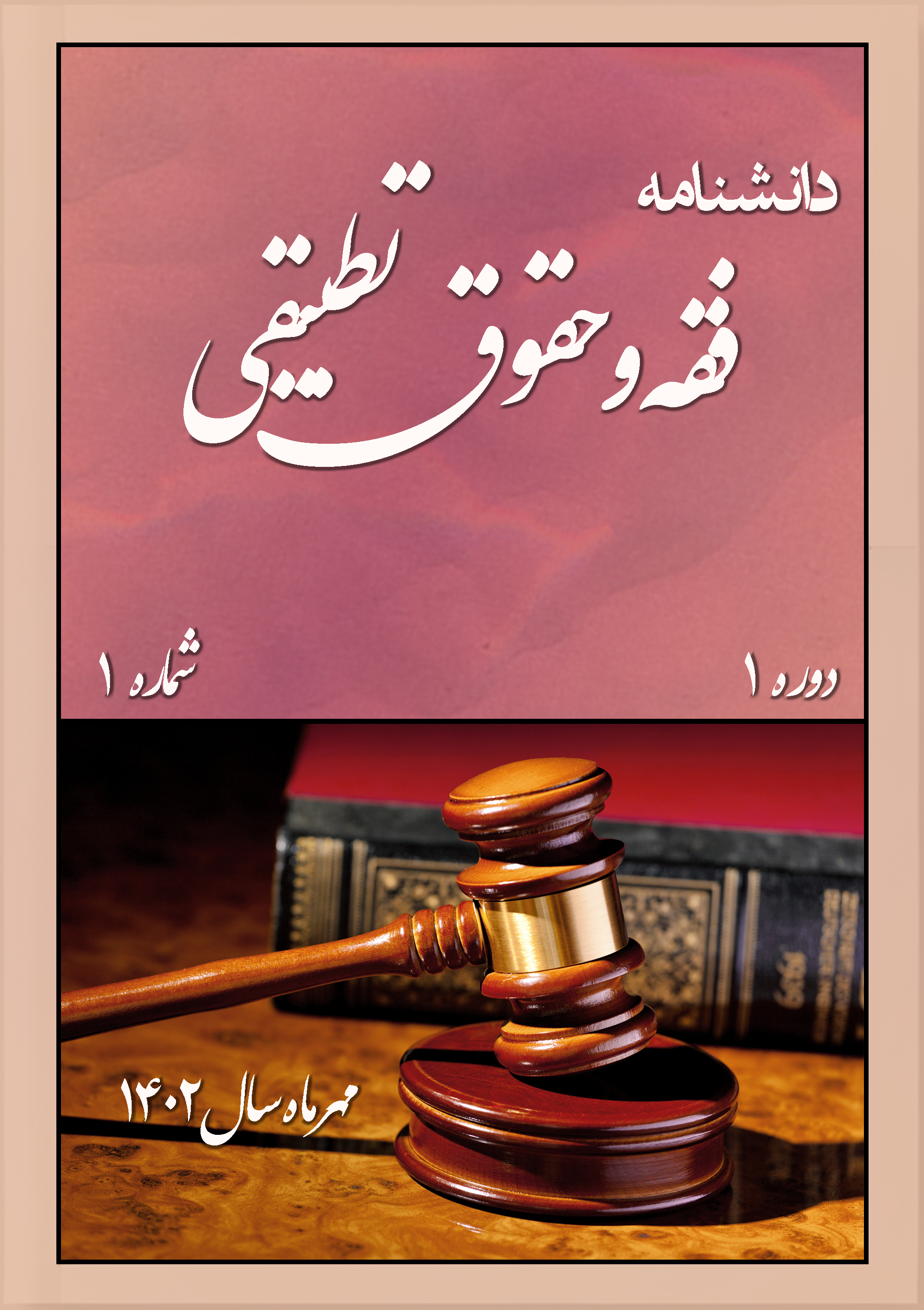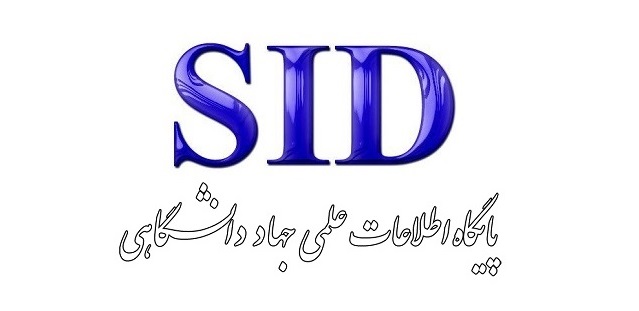بررسی مبانی فقهی و حقوقی الگوی تعیین سود در نظام بانکداری اسلامی
کلمات کلیدی:
سود, بانکداری اسلامی, فقه, حقوقچکیده
اصل حاکمیت اراده بهعنوان یکی از اصول بنیادی حقوق قراردادها، این امکان را برای طرفین قرارداد فراهم میآورد که در چارچوب قوانین حاکم، آزادانه نسبت به انعقاد، تعیین شرایط و اجرای قرارداد تصمیمگیری کنند. این اصل که ریشه در اندیشههای لیبرالی و آموزههای فقهی همچون قاعده «الناس مسلطون علی اموالهم» دارد، در قراردادهای نفتی که بهعنوان یکی از پیچیدهترین و مهمترین انواع قراردادهای بینالمللی شناخته میشود، نقش محوری ایفا میکند. قراردادهای نفتی معمولاً میان دولتها بهعنوان مالک منابع زیرزمینی و شرکتهای بزرگ چندملیتی بهعنوان سرمایهگذاران و مجریان عملیات اکتشاف و بهرهبرداری، منعقد میشوند. با وجود جایگاه برجسته اصل حاکمیت اراده، اجرای آن در قراردادهای نفتی با محدودیتهای متعددی مواجه است. مهمترین این محدودیتها شامل قواعد آمره، نظم عمومی، مالکیت عمومی بر منابع طبیعی، الزامات زیستمحیطی، ملاحظات امنیت انرژی و الزامات ناشی از معاهدات و مقررات بینالمللی هستند. این پژوهش با روش توصیفیـتحلیلی و رویکرد تطبیقی ابتدا به بررسی مبانی نظری اصل حاکمیت اراده و پیشینه آن در حقوق داخلی و بینالمللی پرداخته، سپس نقش این اصل در تنظیم قراردادهای نفتی را تبیین میکند و در ادامه به تحلیل محدودیتهای آن در نظام حقوقی ایران و مقایسه آن با نظامهای حقوقی فرانسه و آلمان میپردازد. یافتهها نشان میدهد که هرچند آزادی قراردادی بهعنوان یک اصل پذیرفتهشده در همه نظامهای حقوقی مطرح است، اما در حوزه نفت، به دلیل اهمیت حاکمیتی، اقتصادی و زیستمحیطی این منبع، همواره با چارچوبها و محدودیتهای الزامآور همراه بوده است. در پایان، راهکارهایی برای ایجاد تعادل میان آزادی قراردادی و ملاحظات حقوقی، سیاسی و زیستمحیطی ارائه میشود تا ضمن حفظ منافع ملی، بستر جذب سرمایهگذاری و همکاریهای بینالمللی نیز فراهم گردد.
دانلودها
مراجع
Ahmadi, G. (2018). Riba and Bank Interest. Ma'aref-e Eslami va Eghtesad Bi-Quarterly, 4(7).
Al-Asfur, H. b. M. Al-Anwar al-Lawami' (Vol. 11).
Alinaghi Langari, M. A. (2015). The Desired Model of Bank Interest in the Islamic Banking System Based on the Teachings of Imami Jurisprudence
Anderson, P. M., Meyer, B. D., & Galitzl. (1994). The Extent and Consequences of Job Turnover Financial Engineering- Tools and Techniques to manage Risk. Brookings Papers on Economic Activity: Microeconomics. https://doi.org/10.2307/2534731
Arghandeh, H., Narachi, J., & Soleimani, J. (2022). Fundamentals of Islamic Banking and Islamic Financial Contracts. Atraran Publications.
Bahrani, Y. Al-Hada'iq al-Nadirah (Vol. 18ER -).
Bayzai, S. E. (1994). Economics of Money. University of Aviation Printing and Publishing Institute.
Bayzai, S. E. (2006). Money, Currency, Banking, and Monetary and Financial Policies. Nur-e Elm Publications.
Branson, W. (1996). Macroeconomics (Vol. 1). Ney.
Chopra, U. (2006). The Future of Economics (An Islamic Perspective). Imam Sadiq University (AS) Publications.
Davoudi, P. (1995). Money in Islamic Economics. SAMT.
Farhang, M. (2005). Dictionary of Economic Sciences.
Feyouzi, F., & Rais Dana, F. (1989). Money and Inflation. Pishbord Publications.
Ghaninezhad, M. (1997). The Difference Between Riba and Bank Interest. Naqd va Nazar Quarterly, 3.
Golpayegani, S. M. (2002). Jurisprudential Foundations of the Partnership System in Interest-Free Banking. Tehran University Publications.
Haeri, S. K. (2011). A Jurisprudential Review of Banking Rules, Part 1, Transcription of Seyyed Muhammad Baqir Sadr's Discussion. Fiqh Quarterly, 18(3).
Haji Hashemi Varnosfaderani, M., & Tohidi, M. (2023). Identifying and Analyzing the Challenges and Obstacles to Implementing Interest-Free Banking in the Islamic Republic of Iran. Islamic Banking Economics Quarterly, 13(46).
Hoggson, N. F. (1926). Banking Through the Ages. Dodd, Mead & Company.
Ibn Manzur, M. i. M. (1987). Lisan al-Arab (Vol. 5). Dar al-Buhuth al-'Ilmiyyah.
Ibrahimi, A. (2013). A Look at Islamic Banking. Bazar va Sarmaye Monthly(41 & 42).
Jamal al-Din, F. (2020). Islamic Finance. Avand-e Danesh.
Karaki, A. i. a.-H. (1983). Jami' al-Maqasid fi Sharh al-Qawa'id (Comprehensive Objectives in Explaining the Rules) (Vol. 4). Mu'assasat Al al-Bayt li-Ihya' al-Turath.
Khalili, T. (2001). Bank Interest is the Same as Riba, Translation of an Article by Yusuf al-Qaradawi. Islamic Economics Quarterly(3).
Kotler, P. (2009). Marketing Management. Amoozesh Publications.
Majedi, G. (1988). Money and Banks from Theory to Policy-Making. Iran Banking Institute.
Meysami, H. (2015). Different Models of Implementing Islamic Banking; Comparing Iran's Experience with Other Countries. Tazehaye Eghtesad Quarterly, 11(144).
Motahhari, M. (2018). The Issue of Riba and Banks. Sadra.
Mousavian, S. A. (2006). A New Model of Interest-Free Banking. Islamic Economics Quarterly, 6(23).
Mousavian, S. A. (2007). Theories of Riba and Interest. Islamic Economics Quarterly, 7(27).
Mousavian, S. A., Nazarpoor, M. T., & Lotfinia, Y. (2016). Theoretical Analysis of the Indonesian Islamic Banking Model and Theoretical Analysis of the Dubai Islamic Bank Model. Journal of Islamic Finance and Banking Studies, 3(5).
Naraqi, A. Mustanad al-Shi'a (Vol. 14).
Paul, A. S. (1964). Economics: An Introductory Analysis. McGraw Hill and Tokyo: Kōgakusha.
Rafiei, M. H. (2017). Exceptions to the Prohibition of Riba from the Perspective of the Two Groups (Sunni and Shia) with Emphasis on Contemporary Issues
Rashid Rida, M. (1993). Tafsir al-Manar. Dar al-Ma'rifah.
Sadr, S. M. B. (1982). Al-Islam Yaqud al-Hayat (Islam Leads Life). Ministry of Islamic Guidance.
Sadr, S. M. B. (2004). Al-Bank al-Laribawi fi al-Islam (Interest-Free Banking in Islam). Maktabat al-Jami'ah al-Naqiyyah al-'Ammah.
Shabani, A. (2013). Islamic Banking: Economic and Jurisprudential Approach. Imam Sadiq University (AS) Publications.
Torabi, S. R., & Torabi, S. A. (2017). The Legal Nature of Bank Deposit Profits in Islamic Jurisprudence and Law. Ghanoonyar.
Zia al-Din, A. (1989). The Path of Islamic Banking. 1.
دانلود
چاپ شده
ارسال
بازنگری
پذیرش
شماره
نوع مقاله
مجوز
حق نشر 2025 ایوب عاطفی, هرمز اسدی کوه¬باد, جهانبخش سلطانی (نویسنده)

این پروژه تحت مجوز بین المللی Creative Commons Attribution-NonCommercial 4.0 می باشد.









